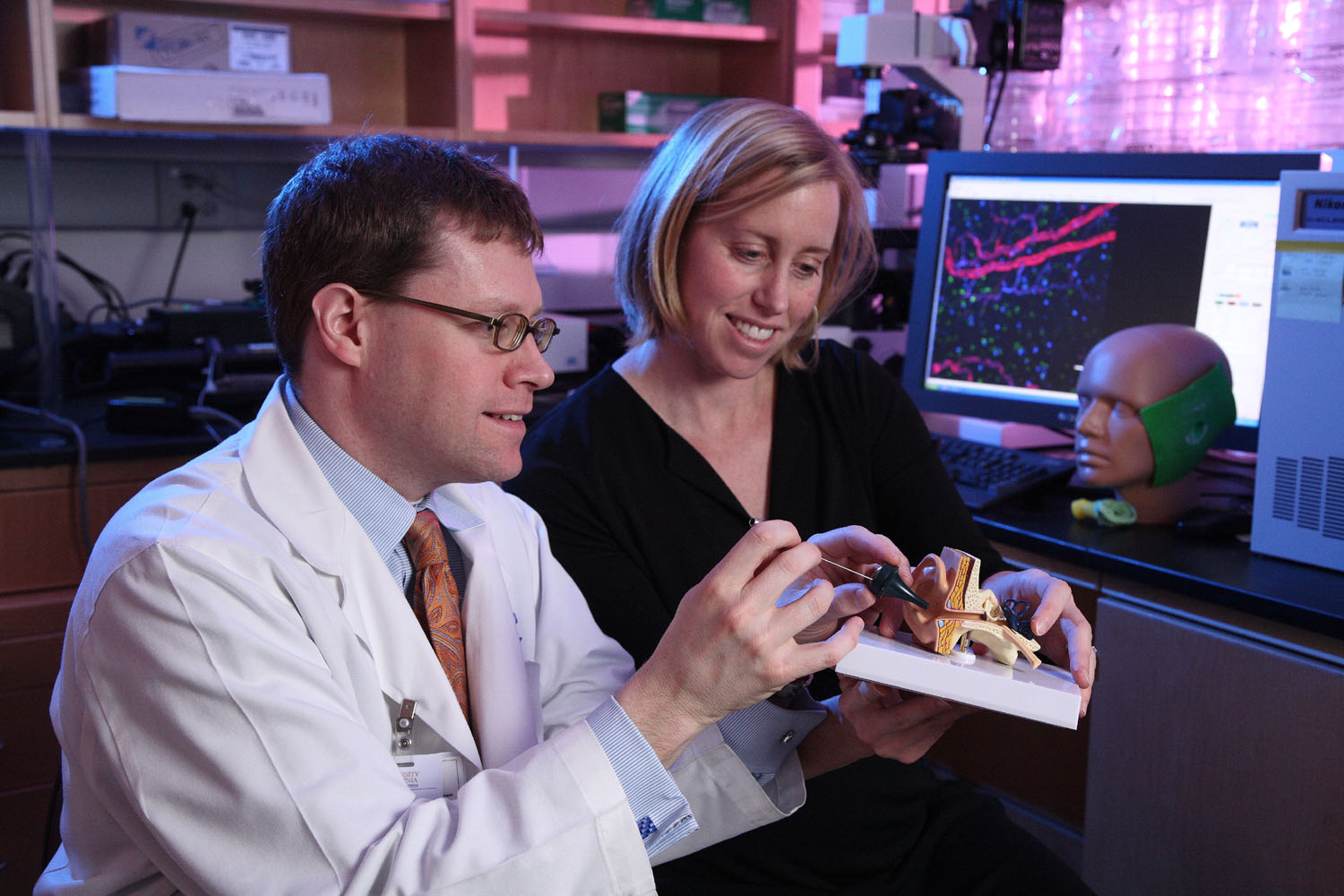
June 13, 2008 — One of the most common surgeries performed on pediatric patients could become faster and safer thanks to a new surgical tool developed by a team of University of Virginia engineers.
Led by Shayn Peirce-Cottler, an assistant professor of biomedical engineering at U.Va.'s School of Engineering and Applied Science, and Dr. Bradley Kesser, an ENT surgeon at the U.Va. Health System, U.Va. undergraduate researchers developed the novel device that combines three of the tools used in the surgical implantation of ear ventilation tubes.
The new tool is currently in clinical trials and has shown promising results.
Each year about 2.2 million young patients need these tubes implanted for the treatment of chronic otitis media (ear infections) with effusion, a common problem associated with earaches. ENT surgeons insert the tubes to relieve pressure and fluid build-up.
"Currently the procedure is tedious," Peirce-Cottler says. "Small tubes — two to three millimeters in diameter — are inserted using four different instruments. The new insertion device facilitates safer, easier insertion. It reduces the time of anesthesia and reduces the number of instruments inserted into the ear canal, which, in turn, reduces the risks for the patient."
![]() Similar in appearance to the current suction tool used to treat chronic ear infections, the new stainless steel device consists of a hollow rod with a collar that holds the tube in place, allowing the surgeon to apply force to insert the tube with one motion.
Similar in appearance to the current suction tool used to treat chronic ear infections, the new stainless steel device consists of a hollow rod with a collar that holds the tube in place, allowing the surgeon to apply force to insert the tube with one motion.
"The more times that you put an instrument in and out of the ear canal, the greater the risk of damage to surrounding structures — the wall of the ear canal or even the tympanic membrane," Kesser said. "The skin of the ear canal is some of the thinnest skin in all of the body, so one little touch on this skin and it starts to bleed. If you have bleeding in the ear canal, you can't see anything. So then you have to remove the blood and get a clear surgical field before you can safely put the tube in."
The project started as an undergraduate Engineering School capstone biomedical design assignment in 2004 led by Peirce-Cottler and Kesser. Since its inception, the device has been enhanced by three different capstone teams.
"The momentum of this research has really been driven by students, both in engineering and medicine," Peirce-Cottler said.
An orthopedic surgeon whose child had required the ear tubes brought the initial idea to the first capstone team. Soon after, an operating room visit was scheduled so the engineering students could see firsthand how the tubes were inserted.
"Students saw that the procedure was tedious even for a skilled surgeon," Peirce-Cottler said. "Getting into the clinical setting with a real-world view made the task and goal immediately apparent."
There have been some hurdles along the way — in particular, accounting for the design needs of surgeons.
"Originally our team wanted to over-engineer the device with too many features," Peirce-Cottler said. "The surgeon wanted something simpler and streamlined. Having an ENT surgeon on the team helped identify this problem and make the device useable."
With dedicated groups of student researchers and a $100,000 grant from the Wallace H. Coulter Foundation, the device is now verging on commercialization. The researchers secured provisional patents and applied for a U.S. Patent in September. They are currently in licensing negotiations with an ENT product company in Scandinavia.
The tool was not the team's only successful creation. A byproduct of their work was the creation of an anatomically exact model of the ear canal, which was developed to test the tool. "We feel that this will be an indispensable product in teaching residents in otolaryngology training programs how to perform this operation," said Kesser.
The model has been given a provisional patent and has also been licensed to a company.
In the next couple of years, the work of surgeons and the health of millions of children could be vastly improved because this dedicated interdisciplinary team refused to accept the status quo.
Media Contact
Article Information
June 13, 2008
/content/uva-engineers-develop-novel-device-help-treat-ear-infections

